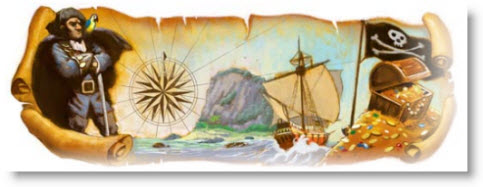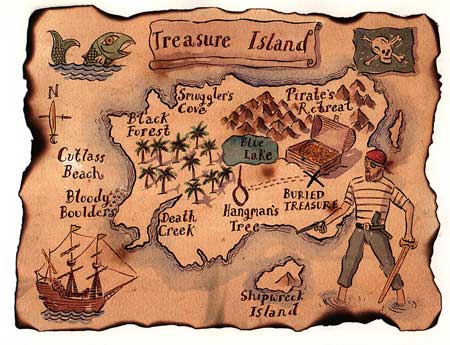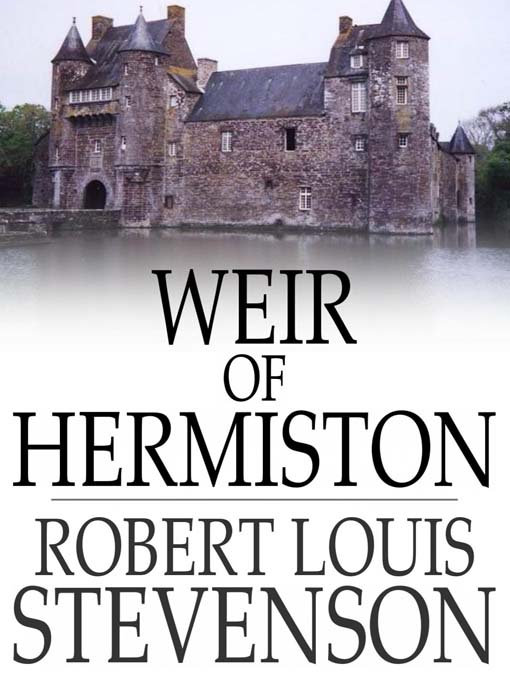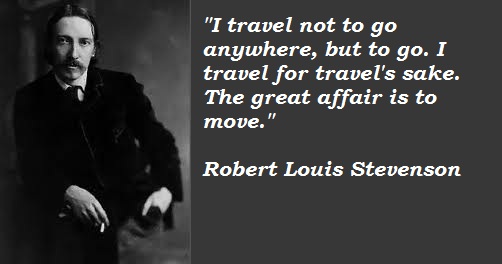Robert Louis Stevenson Google Doodle: A Real Treasure
Robert Louis Stevenson Google Doodle

November 13th 2010 saw the Google homepage pay tribute, through a doodle, to the Scottish novelist, poet, essayist and travel writer, Robert Louis Stevenson. The Robert Louis Stevenson Google Doodle celebrated what would have been the author’s 160th birthday. Stevenson remains a greatly admired author, notable authors who were fans of his writings include, Vladimir Nabokov, Rudyard Kipling, Ernest Hemmingway and Arthur Conan Doyle.
The Robert Louis Stevenson Google Doodle features imagery from one of Stevenson’s most famous works, Treasure Island. In the Robert Louis Stevenson Google Doodle, the “G” of the Google logo was replaced by an image of the pirate captain Long John Silver. The double “O”s were represented by a nautical compass and a cliff face, a square rigged sail ship formed the second “G”. Whilst the “L” and “E” were portrayed through a pirate flag and a treasure chest respectively. The Robert Louis Stevenson Google Doodle appeared globally.

Robert Lewis Balfour Stevenson was born in Edinburgh, Scotland on November 13th 1850. His father was a leading lighthouse engineer and lighthouse design was the family’s profession. Stevenson’s grandfather, who had the same name, achieved great success and fame for his lighthouse designs and construction, constructing 15 lighthouses and six bridges.
Stevenson was an only child, who was observed as “strange looking with eccentric tendencies”. He struggled to settle into his first school at age six. The problem repeated when at the age of eleven he went to the Edinburgh Academy. Due to frequent and recurrent illness Stevenson missed much of his primary education and was schooled at home by a series of private tutors. Writing came to Stevenson at an early age and his childhood was punctuated by a compulsion to produce short stories.
Stevenson entered the University of Edinburgh in November 1867. He was enrolled on an engineering course in which he showed absolutely no interest in. During his time at university, he spent much energy avoiding his lectures and related studies. During this time, Stevenson spent much time travelling, during his yearly holidays, with his father. These journeys took him around much of Scotland and in 1869 he embarked on a tour of the Orkney and Shetland Isles to view the family’s engineering work. Although Stevenson was largely uninterested in the engineering work, he greatly enjoyed the trip as it gave him much inspiration and material for his later writings.
The rejection of a career in engineering was not the only way in which Stevenson began to break from his roots during this period. He began to dress in a more bohemian manner, adopting a velveteen jacket and longhair. In addition, he abandoned his Christian upbringing and labelled himself as an atheist. His limited allowance was squandered in cheap pubs and on the company of prostitutes.
Having made the decision to dedicate himself to his writings, Stevenson visited a cousin in England during 1873. During this trip he was to meet two individuals who would be highly significant in his career, Francis Jane Sitwell and Sidney Colvin. Colvin was to become Stevenson’s literary adviser and released Stevenson’s first paid contribution in The Portfolio. The piece was an essay entitled “The Roads”.
In November 1873 Stevenson’s health deteriorated greatly and he went to Menton on the French Riviera in order to recuperate. After recovering he revisited France several times. During one of these visits he embarked on a canoe journey around France and neighbouring Belgium with his friend, Sir Walter Simpson. This journey was to form the basis of his first novel, “An Inland Voyage”, which was published in 1878.
During the canoe voyage, Stevenson met Fanny Van de Grift Osborne in Grez, during the September of 1876. Stevenson returned to England soon after their meeting, however the memory of Fanny lingered in his thoughts. In 1877 he wrote a piece which is thought to be inspired by Fanny entitled “On Falling in Love”. The essay was published in the Cornhill Magazine. Stevenson met Fanny again during the opening months of 1877 and the couple quickly became lovers. The couple married during May 1880, the couple honeymooned in Napa Valley in San Francisco, at an abandoned mining camp situated on Mount St Helena. His experiences here inspired his later book “The Silverado Squatters”.

The 1880’s were an extremely productive decade for Stevenson. It was during these years that he completed many of the novels for which he is best known. These novels include, “Treasure Island” published 1883, which was his first major literary success. Other novels penned during this period were “The Strange Case of Dr Jekyll and Mr Hyde” published 1886, “Kidnapped” published in the same year, “The Black Arrow: A Tale of the Two Roses” published 1888 and “The Master Of Ballantrae” published 1889.
In 1890 Stevenson emigrated to the isle of Upolu in Samoa. Here he purchased a 400 acre landmass which he converted into a private estate. Whilst in Samoa, Stevenson adopted the name Tusitala which translates as teller of tales. Stevenson got on well with the Samoans and many of them sought him for advice on personal matters. His involvement with the locals resulted in him becoming engaged with local politics. Stevenson complained about what he claimed to be the incompetency of local European officials and published “A Footnote to History”. This protest resulted in the recall of two of the officials and for a period Stevenson feared that he would be deported.

Towards the end of his life Stevenson suffered depression. He wondered if he had exhausted his creative ability. This bout of depression was overcome as Stevenson wrote what he believed to be his finest novel, “Weir of Hermiston”. He is said to have commented that the book was, “so good, it frightens me.”
Stevenson died 3rd December 1894. During a conversation with his wife he is reported to have exclaimed, “What’s that!” asking his wife, “Does my face look strange before collapsing.” His death was attributed to a cerebral haemorrhage. He died aged just forty four. Google have celebrated many of the great authors of the nineteenth century besides this Robert Louis Stevenson Google Doodle. Many of them have also received Google Doodles tributes. The scroll of honour includes, Jane Austin, Mark Twain and Oscar Wilde.

